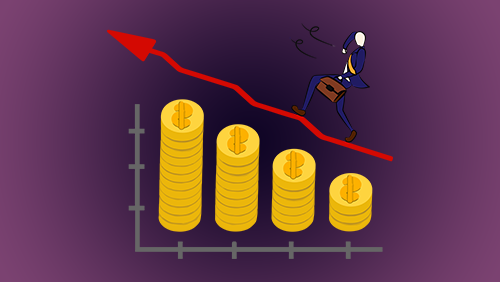Price Action's Dark Side:
Why It Might Not Be the Trading Nirvana You Seek
While price action analysis (PAA) enjoys widespread popularity, its allure as a guaranteed path to trading success can be a mirage. Delving into the critical reflections of seasoned traders reveals a darker side to this seemingly potent tool, raising questions about its efficacy for every aspiring market maestro.
1. The Subjective Symphony: Renowned trader Mark Douglas, in his seminal work "Trading in the Zone," poignantly highlights the inherent subjectivity of PAA. He argues that interpreting price action patterns is prone to individual biases and emotional influences, leading to inconsistent and often inaccurate interpretations. What appears as a bullish engulfing pattern to one trader might be a bearish harami to another, creating a fertile ground for costly misinterpretations.
2. The Lagging Indicator Trap: Veteran trader and author Al Brooks, in his book "Naked Forex," dissects the common misconception that PAA offers real-time insights. He argues that price action is, by definition, a lagging indicator. It reflects what has already happened, not what will happen, potentially leading traders to chase past trends and miss out on emerging opportunities. This reliance on historical data can be particularly detrimental in fast-paced, volatile markets.
3. The False Promise of Simplicity: While PAA appears deceptively simple, mastering its intricacies is a herculean task. As Rayner Teo, author of "The Complete Guide to Price Action Trading," cautions, the sheer volume of patterns, formations, and market nuances can be overwhelming for even the most dedicated trader. This complexity can lead to analysis paralysis, hindering timely decision-making and ultimately eroding profits.
4. The Inevitable False Positives: Even for seasoned practitioners, PAA is not without its pitfalls. The ever-present risk of false positives, where patterns are misinterpreted or fail to materialize as expected, is a constant threat. As Barry Ritholtz, author of "Trading Price Action Trends," notes, "The market is a complex beast, and relying solely on price action can lead to costly mistakes."
5. The Erosion of Discipline: The focus on individual candlesticks and formations can breed a dangerous overreliance on technical analysis, potentially overshadowing fundamental factors and risk management strategies. This can lead to impulsive trading decisions, disregarding stop-loss orders and position sizing, ultimately eroding trading discipline and jeopardizing capital.
Beyond the Candlesticks: The Bigger Picture Missing?
Price action, by its very nature, focuses on the microcosm of individual price movements. It can neglect the broader context, the interplay of fundamental forces, and the overarching market sentiment that ultimately drive the long-term trend. This narrow lens can lead to missed opportunities and premature entries, leaving traders exposed to unforeseen shifts in the market landscape.
The Verdict:
Therefore, it is time to move beyond the allure of the candlestick ballet and embrace a more nuanced perspective. Price action analysis can be a valuable tool, but only when used in conjunction with other strategies, Fundamental analysis (economic events) and a clear-eyed understanding of its limitations. Only then can traders navigate the unpredictable dance of the forex market with grace and resilience, avoiding the pitfalls of misplaced faith in the seductive yet fragile language of candlesticks.
Happy trading
may the pips be ever in your favor!





